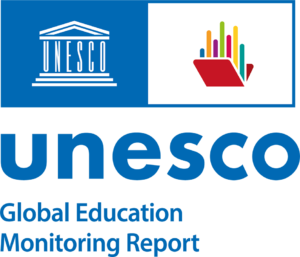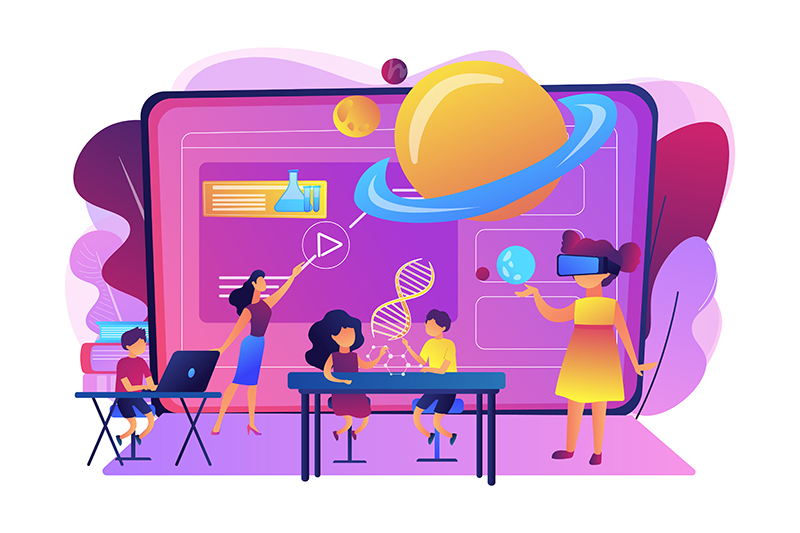Mary Burns, Escola Superior de Educação Paula Frassinetti, Oporto, Portugal
* The original version of this article, Willing but not yet ready and able? Teachers’ ongoing technology integration challenges was originally published on the World Education Blog, curated and edited by the GEM Report. This content, like its original, is distributed under CC BY SA 3.0 IGO.

Why is technology integration—using technology to enhance teaching and learning for greater efficiency, effectiveness, and engagement—such a formidable challenge for teachers across the globe? While it stems partially from specific requirements, such as equitable technology access, comprehensive teacher training, and robust support systems, these factors alone do not guarantee successful integration.
Integrating technology well remains elusive for many teachers—both wealthy and poor. One example of the former can be found in my 2019 research with teachers in a wealthy Latin American international school who struggled to excel in technology integration despite an abundance of technology. To better understand why integrating technology is so challenging, I conducted extensive interviews with 70 teachers from 17 countries for my background paper on teachers and technology for the 2023 GEM Report.
“The proper integration of technology remains an elusive task for many educators, both in privileged and vulnerable environments.”
– Teacher in Zambia
We have long recognized that teachers’ beliefs wield significant influence when it comes to technology use and integration, even within well-resourced environments. Teachers’ perceptions regarding technology and its potential to help them achieve their primary instructional objectives, as well as their pedagogical beliefs, particularly in terms of teacher-centred versus learner-centred approaches, play a pivotal role in the integration process.
The teachers I interviewed exhibit a high level of motivation and enthusiasm for technology, evident both in their personal use of devices (phones) and their utilization of technology (where available) in school settings. Furthermore, they unanimously endorse learner-centred instructional approaches.
Yet these beliefs and willingness, however positive, do not automatically result in readiness or the necessary confidence and self-efficacy to integrate technology well. The causes of this disparity are less attributable to the teachers themselves and more rooted in the systems in which they operate.
“The interviewed teachers showcased a high level of motivation and enthusiasm for technology, evident both in their personal use of devices (phones) and in their utilization of technology in school environments whenever it’s available. Furthermore, they unanimously support instructional approaches focused on learning.”
– Teacher USA
The educational bureaucracy profoundly influences technology integration, shaping it through policies, values, and organizational culture. Beyond the basics of infrastructure and training, successful integration demands a shared vision, leadership, planning, a change-oriented environment, and a culture that fosters innovation and experimentation. Alignment of educational components—curriculum, assessment, pedagogy, and teacher evaluation—to technology use is vital. Minus such coherence, technology’s potential to enhance student learning is precarious.
For teachers interviewed for this background paper, the education system itself presents the most significant barrier to integration. Unstable policy environments exacerbate their efforts, with priorities and initiatives shifting each time there’s a new government or Minister of Education. Official views of technology integration often focus solely on equipment and basic training while neglecting vision, integration frameworks, curriculum alignment, assessment strategies, standards, and time for planning.
This reductionist approach, driven by simplicity and speed, overlooks the breadth and depth needed for meaningful technology integration. The absence of a unified vision results in inconsistent policies that exist only on paper, uneven technology implementation, and a lack of coordination across education levels.
The teachers interviewed for this document consider that the education system itself represents the most significant barrier to integration
Effective pre- and in-service education is lacking
Pre-service Education
Using technology is distinct from integrating it into teaching, as the above quote makes clear. In a 21st century education system, pre-service teachers are increasingly expected to incorporate technology into teaching. However, many pre-service programs provide minimal exposure to technology integration, leaving teachers ill-prepared to use technology effectively particularly in learner-centred ways.
This deficit in pre-service education constitutes the second major barrier to technology integration for teachers I interviewed. For these teachers, their pre-service programs failed to model effective technology integration, offered little guidance in technology-based instructional design, and often consisted of theoretical courses taught by individuals lacking classroom experience. Not surprisingly, many teachers reported graduating without the confidence or ability to integrate technology.
This critique aligns with broader research findings. For instance, the Teaching and Learning International Survey (TALIS) in 2018 showed that, after their pre-service training, only 43% of teachers felt well or very well prepared to use technology for teaching in upper-middle- and high-income countries. Recent data from the International Society for Technology in Education (ISTE) noted that 56% of American teacher graduates lack confidence in using technology for teaching.
In-service professional development
– Georgian Teacher.
Professional development quality and consistency pose a significant barrier to effective technology integration. While some teachers appreciate their professional development experiences, others lament its inconsistency and variable quality. These concerns extend to the formats of professional development sessions, with issues such as large-scale workshops in hotel conference rooms rather than in-school professional development with limited opportunities for peer collaboration and practical application in authentic settings: their schools. In the Global South, donor-funded programs persist in using the ‘cascade’ or train-the-trainers approach—despite being discredited in research—and employ teacher ‘trainers’ who more often than not lack actual sustained teaching experience.
How do we support teachers to become ready and able to integrate technology?
As interviews show, their enthusiasm for technology notwithstanding, the barriers teachers face are largely beyond their control and negatively impact their confidence and self-efficacy regarding technology integration. Nonetheless, within these barriers lie the seeds of their potential solutions.
Building organizational readiness: Education systems must prioritize technology integration that fosters learner-centred instruction and critical thinking. They should develop and communicate a clear vision of what exemplary technology integration looks like in practice. This involves developing strategies, goals, and benchmarks for teaching and learning with technology and selecting technologies that enhance, rather than hinder, student-centred learning.
To demonstrate this commitment, education systems should furnish teachers with well-defined frameworks for technology integration, streamlining the process. And they must ensure that the essential support structures, encompassing organizational, pedagogical, and teacher-related components, are in place to facilitate seamless technology integration.
Building teacher capacity: Pre-service education must model technology integration and help pre-service teachers design engaging and rigorous technology-based activities.
Pre-service teacher education programs should prioritize practical teaching experience over theoretical knowledge. They can start by reconfiguring hiring criteria—pre-service teachers don’t need a researcher with a PhD lecturing them about teaching; they need a practicing teacher modelling good instruction with technology. Pre-service instructors can get closer to schools through frequent classroom observations and being mentored by experienced primary and secondary school teachers.
Despite their critiques of the teacher professional development (TPD), teachers value TPD and want more of it: more variety, more modelling of best practices, more collaborative learning opportunities with colleagues, more instruction from other teachers versus experts, support and follow-up, and more official recognition for the vast amount of self-directed learning teachers do on their own via the Internet.
**********************
Technology integration is extraordinarily challenging—involving use, design, instruction, and assessment—all of which are complex. But teachers are more than willing to devote themselves to effective technology integration. We can reward this willingness by embarking on the necessary systemic changes to help them effectively integrate technology into their teaching practices. Educational agencies, donor programs, and school systems that do this will not simply be improving teachers’ ability to integrate technology, they will be increasing their teachers’ overall effectiveness.
For a deep dive on the above issues and paths forward, see Education Development Center’s Distance Education for Teacher Training (2023, open access), a review of research on teaching with technology and a guide for best practices in supporting and preparing teachers to integrate technology.








